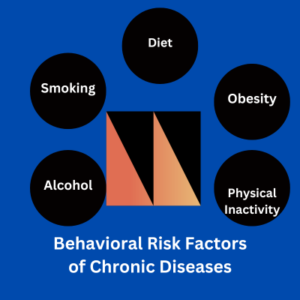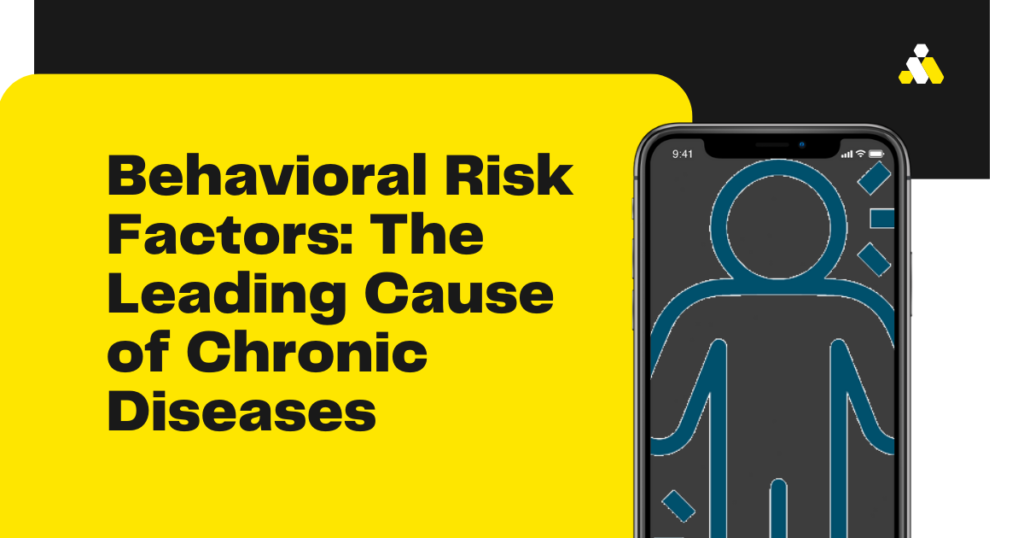Table of Contents
Introduction
Behavioral risk factors are the cause of chronic diseases which are the leading cause of death and disability worldwide. They are also a major economic burden, costing trillions of dollars each year. While there are many factors that can contribute to chronic diseases, behavioral risk factors are the leading cause.
Behavioral risk factors are things that you do or don’t do that can increase your risk of developing chronic diseases. Some of the most common behavioral risk factors include:
- Diet: Eating a diet high in unhealthy fats, sugar, and processed foods can increase your risk of developing heart disease, stroke, diabetes, and some types of cancer.
- Physical activity: Not getting enough physical activity can increase your risk of developing heart disease, stroke, type 2 diabetes, and some types of cancer.
- Smoking: Smoking cigarettes is the single most preventable cause of death in the world. It can increase your risk of developing heart disease, stroke, lung cancer, and many other chronic diseases.
- Alcohol consumption: Drinking too much alcohol can increase your risk of developing liver disease, heart disease, stroke, and some types of cancer.
- Obesity: Being overweight or obese can increase your risk of developing heart disease, stroke, type 2 diabetes, and some types of cancer.
In this blog article, we will discuss the top 5 behavioral risk factors for chronic diseases. We will also discuss how policymakers are trying to correlate behavioral risk factors with chronic diseases and how you can take steps to prevent these diseases.
What are behavioral risk factors?

Behavioral means relating to behavior,or what you do. Behavioral risk factor is any specific behavior or pattern of behaviors (e.g. overeating or smoking) that increases an individuals likelihood of developing a disorder, or syndrome.
Behavioral risk factors are modifiable behaviors or personal habits that increase the risk of developing chronic diseases. These factors include smoking, poor diet, physical inactivity, excessive alcohol use, and obesity.
Behavioral risk factors are important because they are often preventable. If people can change their behavior, they can significantly reduce their risk of developing chronic diseases.
The concept of behavioral risk factors was first proposed by the Centers for Disease Control and Prevention (CDC) in the early 1980s. The CDC defined behavioral risk factors as “those behaviors that increase a person’s chances of developing a chronic disease.
The CDC has identified five major behavioral risk factors for chronic diseases:
- Smoking: Smoking is the leading cause of preventable death in the United States. It is responsible for one in five deaths, or about 480,000 deaths each year. Smoking increases the risk of developing a wide range of chronic diseases, including heart disease, stroke, lung cancer, chronic obstructive pulmonary disease (COPD), and type 2 diabetes.
- Diet: A poor diet is a major risk factor for heart disease, stroke, type 2 diabetes, and some types of cancer. A poor diet is often high in saturated fat, trans fat, cholesterol, sodium, and sugar, and low in fruits, vegetables, and whole grains.
- Physical inactivity: Physical inactivity is a major risk factor for heart disease, stroke, type 2 diabetes, and some types of cancer. People who are physically inactive are more likely to be overweight or obese, and they are also more likely to have high blood pressure, high cholesterol, and other risk factors for chronic diseases.
- Alcohol use: Excessive alcohol use is a major risk factor for liver disease, heart disease, stroke, cancer, and injuries. Alcohol use can also lead to addiction and other problems.
- Obesity: Obesity is a major risk factor for heart disease, stroke, type 2 diabetes, and some types of cancer. Obesity is also a risk factor for sleep apnea, osteoarthritis, and other chronic diseases.
The CDC also recognizes that there are other behavioral risk factors, such as poor sleep habits, stress, and lack of social support. These risk factors can also contribute to the development of chronic diseases.
Types of Risk Factors:
There are several types of risk factors that can be associated with the cause of chronic diseases. But none of the risk factors belongs to the category of root cause of chronic disease.
The various risk factors are listed below:
Behavioral risk factors
Behavioral risk factors usually relate to ‘actions’ that the individual has chosen to take. They can therefore be eliminated or reduced through lifestyle or behavioral choices. Examples include:
smoking tobacco
drinking too much alcohol
nutritional choices
physical inactivity
spending too much time in the sun without proper protection
not having certain vaccinations
unprotected sex.
Physiological risk factors
Physiological risk factors are those relating to an individual’s body or biology. They may be influenced by a combination of genetics, lifestyle, and other broad factors. Examples include:
- being overweight or obese
- high blood pressure
- high blood cholesterol
- high blood sugar (glucose).
Demographic risk factors
Demographic risk factors are those that relate to the overall population. Examples include:
- age
- gender
- population subgroups, such as occupation, religion, or income.
Environmental risk factors
Environmental risk factors cover a wide range of topics such as social, economic, cultural and political factors as well as physical, chemical and biological factors. Examples include:
- access to clean water and sanitation
- risks in the workplace
- air pollution
- social settings.
Genetic risk factors
Genetic risk factors are based on an individual’s genes. Some diseases, such as cystic fibrosis and muscular dystrophy, come entirely from an individual’s ‘genetic makeup’. Many other diseases, such as asthma or diabetes, reflect the interaction between the genes of the individual and environmental factors. Other diseases, like sickle cell anemia, are more prevalent in certain population subgroups.
CDC’s role in proposing behavioral risk factors as the cause of chronic diseases!
The CDC has been a leader in the research and prevention of behavioral risk factors. The CDC’s Behavioral Risk Factor Surveillance System (BRFSS) is a national survey that collects data on behavioral risk factors from adults in the United States. The BRFSS data is used to track trends in behavioral risk factors and to identify populations at high risk for chronic diseases.
The CDC also provides a variety of resources to help people reduce their behavioral risk factors. These resources include information on smoking cessation, healthy eating, physical activity, alcohol use, and weight management.
The concept of behavioral risk factors has been influential in public health. It has helped to focus attention on the importance of individual behaviors in the prevention of chronic diseases. It has also led to the development of effective interventions to reduce behavioral risk factors.
The CDC has developed a number of programs and initiatives to help people reduce their behavioral risk factors. These programs include the National Health and Nutrition Examination Survey (NHANES), the Behavioral Risk Factor Surveillance System (BRFSS), and the National Prevention Strategy [ ref:
faculty.tamucc.edu/sfriday/wordpress/?p=2692a] [
www.atlantadunia.com/dunia/health/Articledetail.aspx?q=23]
The CDC’s work on behavioral risk factors has helped to raise awareness of the importance of these factors and has led to the development of effective interventions to help people reduce their risk of developing chronic diseases.
What is the difference between behavioral risk factors and the root cause of disease?
A behavioral risk factor is a modifiable behavior or personal habit that increases the risk of developing chronic diseases. These factors include smoking, poor diet, physical inactivity, excessive alcohol use, and obesity.
The root cause of a disease is the underlying biological process that leads to the development of the disease. If the root cause is known, then it is possible to reverse all chronic diseases. For example synergistic action of certain micronutrients can reverse heart disease.
Takeaway from this article
Risk factors are something that lead you away from the true cause, the root cause. This is the main tragedy nowadays. With so many risk factors, patients get confused on what exactly to do to reverse the diseases.
All these diseases occur in the human body, where it has about eleven systems working in human body, several tissues and about 37 million tissues.
All these cells require only one thing to survive and that is food. Don’t you think that your entire health depends on the only factor “food”. Behavioral risk factors takes you miles away from thinking about food and health.
References
faculty.tamucc.edu/sfriday/wordpress/?p=2692a
www.atlantadunia.com/dunia/health/Articledetail.aspx?q=23
Risk factors in health and disease:https://toolbox.eupati.eu/resources/risk-factors-in-health-and-disease/
Understanding Health Risks: https://newsinhealth.nih.gov/2016/10/understanding-health-risks
Behavioral Research in Cancer Prevention and Control: Emerging Challenges and Opportunities https://www.ncbi.nlm.nih.gov/pmc/articles/PMC8344826/

